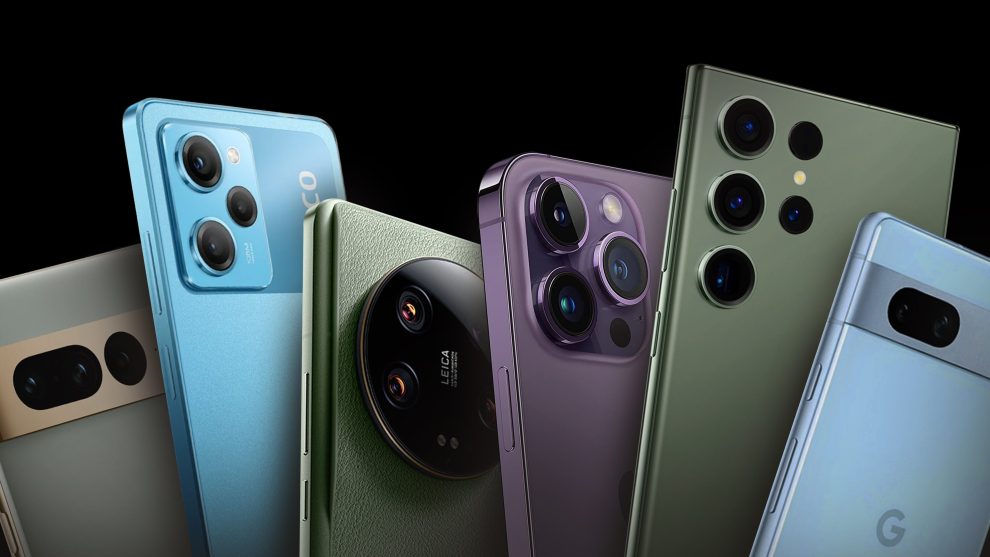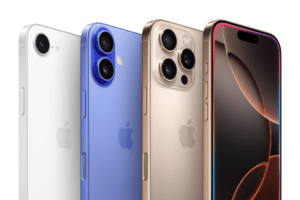Gone are the days of grainy, pixelated phone pictures. Today’s smartphone cameras are pushing the boundaries of photography, rivaling dedicated point-and-shoot cameras in image quality and versatility. With cutting-edge sensor technology, advanced processing algorithms, and innovative features, capturing stunning photos and videos is now easier than ever, right in the palm of your hand.
But with so many options on the market, choosing the best smartphone camera can be overwhelming. In this in-depth guide, we’ll explore the latest sensor developments powering these phone cameras, highlight the top contenders leading the pack, and help you find the perfect fit for your mobile photography needs.
Sensor Technology: The Foundation of Image Quality

At the core of any camera sits the image sensor, light sensitive silicon that captures incoming photons and converts them into digital picture information. Sensor size, megapixel count, pixel size, and proprietary pixel technologies all contribute to a sensor’s low light sensitivity, dynamic range, and overall image quality.
Sensor Size Matters
Larger image sensors allow for larger pixels and lenses, enabling more light capture and usually better image quality, especially in low light. That’s why prosumer mirrorless and DSLR cameras boast large full frame sensors.
Among smartphone cameras, flagship devices like the Samsung Galaxy S23 Ultra, iPhone 15 Pro Max, and Sony Xperia 1 V feature some of the largest sensors, measuring between 1-inch and 1/1.3-inches diagonally. By comparison, mainstream phone cameras typically utilize much smaller 1/2.55 or 1/1.7-inch sensors. Those extra millimeters make a big difference, allowing cutting edge phone cameras to capture more fine details, record with higher dynamic range, and excel in low light compared to smaller-sensored counterparts.
Megapixels: Not Everything, But Significant
Higher megapixel counts lead to more resolution and the ability to crop in while maintaining sharpness. However, without sufficiently large pixels and advanced processing, cramming in too many megapixels can negatively impact image quality, especially in low light. That’s why phones like the 50MP Google Pixel 7 Pro and 48MP Oppo Find N2 focus on maximizing pixel size at 12MP and 12.6MP default output respectively, maintaining image quality while allowing for controlled resolution boosts using pixel binning techniques.
Pixel Size and Design Makes a Difference
While megapixel count relates to overall resolution, the physical size of each pixel also plays a significant role. Larger individual photo sites typically capture more light, reducing unwanted visual noise in images, crucial for low light photography. Smaller pixels, however, allow sensors to be packed with more megapixels in a given area. Smartphone camera engineers constantly juggle these tradeoffs.
Innovations in pixel design also unlock performance improvements. For example, most phone cameras now utilize dual photodiode technology dubbed Dual Pixel AF by Samsung and Dual Pixel CMOS AF by Sony, enabling faster and more accurate autofocus. Meanwhile, camera brands continue to push new technologies like Samsung’s Tetracell and Sony’s RGBW pixel designs to further enhance light capture.
Software, Computational Photography & Innovative Camera Features

While sensor hardware lays the foundation, software processing, artificial intelligence, and innovative features finalize the imaging capabilities of smartphone cameras today. Advanced algorithms, multi-frame capture techniques, neural image processing, and more augment dedicated camera hardware in the pursuit of photography perfection.
HDR Creates Natural Looking Images
By combining multiple exposures into one final image, today’s HDR or high dynamic range capabilities greatly improve contrast and enhance detail in shadows and highlights. The latest iPhones boast multi-frame Smart HDR capabilities by default, while Sony and Google phones feature auto HDR controls. HDR delivers more natural, true-to-life tone mapping across lighting conditions.
AI Offers Scene Intelligence & Photography Smarts
Beyond HDR, artificial intelligence also brings meaningful photography improvements, powering capabilities like real time scene recognition and optimization. For example, Google Pixel phones run the Pixel Neural Core, identifying subjects and lighting conditions in real-time to intelligently enhance photo parameters. Specific optimizations tailor enhancements to landscapes, portraits, action shots and more. Meanwhile, Huawei’s latest Mate phones promise AI RAW development for computational RAW processing power.
Night Modes Own the Dark
Today’s best smartphone cameras offer dedicated night and low light modes for vastly improved performance in dim environments. Using long exposure principles and multi-frame compositing, night modes produce bright, detailed images where old phones would simply fail. Apple, Google, Samsung, and other leading manufacturers now include night modes that shift the entire low light photography paradigm for phones.
Multiple Lenses Provide Versatility
While early smartphone cameras featured a single prime lens, virtually all flagships today provide an array of cameras with different perspective. Key multiples you’ll see include wide angle, telephoto with 2x or greater optical zoom, and ultra wide lenses for fitting more in the frame. By combining inputs from multiple cameras, today’s leading phones allow easy switching between perspectives for added shooting versatility.
The Smartphone Cameras to Beat in 2024
Now that we’ve covered the core innovations powering this new era of smartphone photography, let’s highlight some of the top contenders delivering cutting-edge mobile image making today:
Samsung Galaxy S23 Ultra

The freshly launched Galaxy S23 Ultra packs in a new 200MP wide camera sensor backed by Samsung’s Tetra2 pixel binning technology. Combined with two 10MP telephotos for 3x and 10x optical zoom, plus a 12MP ultrawide camera, the S23 Ultra rivals the versatility of traditional interchangeable lens cameras. Exceptional software processing and AI photography refinements also factor in making Samsung’s newest flagship a top choice for phone photography in 2024 and beyond.
Google Pixel 7 Pro
Pixel phones have wowed mobile photographers with stunning computational photography chops since their debut, and the latest Google Pixel 7 Pro impresses with its advanced new 50MP main camera and upgraded telephoto with 5x optical zoom. Class-leading software and AI photography highlight the Pixel experience, bringing meaningful enhancements to all shooting scenarios. Google’s phones consistently produce among the best imaging results when lighting gets challenging.
Apple iPhone 15 Pro Max
Boasting a refined triple lens camera system with all-new 48MP main sensor, Apple’s iPhone 15 Pro Max delivers detail-rich photography and exceptional low light prowess. A upgraded telephoto with 3x optical zoom and Action mode stabilization join Apple’s class-leading image processing software. Video creators will love Apple’s new Enhanced Cinematic mode for recording cinematic footage up to 4K HDR at 30 fps across all three rear facing cameras.
Sony Xperia 1 V
Sony draws from its acclaimed Alpha camera systems to infuse its flagship Xperia smartphones with serious photography chops. Combining Zeiss engineered lenses, pro photography features like 20 fps burst shooting and Real-time Eye AF, and Cinema Pro video features, the Xperia 1 V stands tall as an innovative phone for multimedia creators. If video chops factor big in your mobile photography, Sony brings impressive pedigree.
Oppo Find N2 Flip
One of the most intriguing camera phones of 2024 comes wrapped in a flip form. Oppo’s Find N2 Flip delivers flagship photography from its innovative flex-cam system and large 1-inch Sony IMX890 primary sensor. Unfolded, expect gorgeous high resolution images even in low light. But the Flip also enables flex-cam selfie potential from its folded state, delivering quality self portraits without contorting to use the main cameras. If a flip form beckons for you, Oppo built it with photography at the forefront.
Find Your Perfect Smartphone Camera Companion
In summary, today’s best phone cameras combine advanced computational photography features with large, high resolution image sensors to deliver photography well beyond what pocket cameras can offer. Whether optimizing portraits or capturing stunning HDR landscapes, the lines between dedicated cameras and mobile devices continue to blur.
We hope this overview of cutting edge camera phone technologies and capabilities helps identify the best smartphone photographer’s companion for you this year. Happy phone photography shooting!
















Add Comment